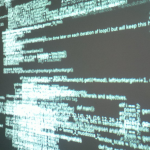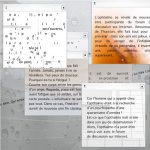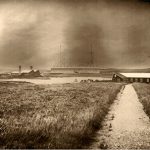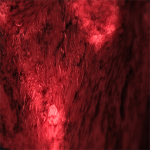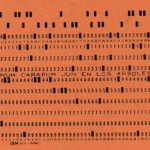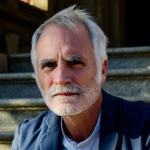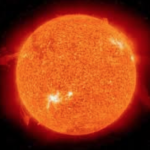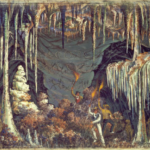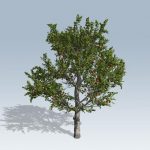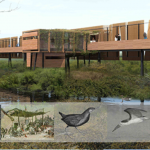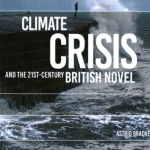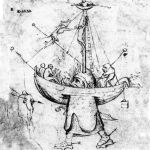2020
Christelle Proulx argues that screen captures in art and literature projects introduce three different effects on the representation of online world and its relation to offline world. The spatiotemporal specificities of the images produced are first considered through the photographic as a category of thought, then the importance of location is interrogated via the situated knowledges of Donna Haraway (1988) and concludes on the interface effects of this kind of imaging practice.
The authors speculate why some are bored by the goal of computational generation of "human-like" text. Inspired by Italo Calvino's alternative, minor strain in "Cybernetics and Ghosts," they argue that this kind of text generation provides an opportunity to destabilize as well as refine our sense of the differences between human and machine cognition.
Bouchardon and Mayer in this essay question the narrative model of personal identity – the idea of the self as a story – in light of contemporary forms of electronic literature.
Working with a custom-coded, automated-art-system of their own devising, Australian digital artists Karen Ann Donnachie and Andy Simionato have now archived a literary corpus for future study in what they have called The Library of Nonhuman Books. Yet it remains uncertain whether human scholars will visit Donnachie's and Simoniato's virtual library. Seeing as how "there are no human ‘typewriters’ now, how can we be sure there will still be human ‘readers’ in the future?"
In this keynote, presented at the 2019 Electronic Literature Organization conference in Cork, Ireland, Anne Karhio highlights the importance of electronic literature as no less peripheral in its own construction of social, cultural, networked communities and material geographies. By looking also at recent scholarship on digital infrastructures, media archaeology, and new materialist approaches to communications technology, Karhio delineates changes that emerge from the margins, "from experimentation and risk-taking that questions established conventions, and canons, and flickers at the border of the actual and the imaginary."
Against the backdrop of écriture feminine and e-lit texts, Ensslin et. al advance methods and findings of the "Writing New Bodies" project (“WNB”; SSHRC IG 435-2018-1036; Ensslin, Rice, Riley, Bailey, Fowlie, Munro, Perram, and Wilks) to lay the foundations of Applied E-literature Research. Their aim is to develop a digital fiction for a new form of contemporary, digital-born bibliotherapy. In following the principles of critical community co-design and feminist participatory action research, WNB engages young woman-identified and gender nonconforming individuals ages eighteen to twenty-five in envisioning worlds where they feel at home in their bodies. The workshops encourage them to engage, conversationally and through reading, co-designing and writing digital fiction, with key challenges facing young women today, including cis- and heteronormative gender relations, racism, anti-fat attitudes, ableism, and familial influences on the ways young women “ought to look” (Rice). This essay originally appeared as a keynote at the 2019 ELO conference in Cork, delivered by Ensslin.
Given the longstanding but limited readership for North American, Euro and Scandinavian e-lit, will Latin America succeed in carrying its experimental and avant-garde approaches to a general e-lit audience? Claudia Kozak's expanded keynote for the 2018 ELO conference in Montreal, titled "Mind the Gap!", explores some first forays in this direction: practices that might hearken back to Puig and Borges in print; Omar Goncedo, Eduardo Darino, Erthos Albino de Souza and Jesús Arellano in the era of mainframes; and (not least) fan fiction over pretty much the entire span of literary writing.
Image: Omar Gancedo, IBM (1966).
A conversation at a heightened level of intensity, ranging from the aleatory tradition of Emmett Williams, Jackson Mac Low, and John Cage, through post-Poundian poetry and its Chinese influences, kinetic poetry or programmable media where the poem itself is performing, not just the poet. Attention is also given to the Internet as these two literary artists knew it for a very brief moment, before Google and Facebook, circa 2004, "figured out that everybody needed an account."
Citing Catherine Gallagher on fictionality’ as the ontological ground of the novel,’ LeMenager seeks a similar `alternative grounding’ for progressive, transgenerational social change in a time of epistemic and ecological crisis. The essay is one of many selected for co-production in ebr and our two collections from Bloomsbury Academic, Post-Digital: Critical Debates from electronic book review .
2019
This collection emerges from a panel hosted by the Modern Language Association's MS Forum on Visual Media (http://naturalmedia.org/titles/) in 2017. "Natural media" re-valuates the communicative potential of natural spaces, especially in instances where symbolic import collides with raw matter in a manner that hides from, disguises, or elides stark reality. It considers intersections, collisions, tensions, opportunities, and affordances that arise in the discussion of "Natural Media," both broadly conceived and in its contributors' particular areas of research. It is also in close conversation with research inspired by a previous gathering on a closely related topic: Digital and Natural Ecologies.
Toward a more expansive standard of botanical, graphical, ecosystemic and (not least) digital realism.
Can we again devise bots, in the tradition of Nigel Leck's AI_AGW, capable of staving off environmental disaster and saving humanity from its own stupidity? Twitter has censored this particular bot that Leck created ¨with the singular mission of hunting down false claims made by climate change deniers, calling them out, and correcting them with information linked from peer-reviewed essays in scientific research journals.¨ With this interview, ebr and our Natural Media co-editors celebrate and memorialize this noble, though brief realization of the critical and creative potential of community built digital media.
A slightly different version of this work originally appeared as part of a longer article, "The Architectural History of Disappearance: Rebuilding Memory Sites in the Southern Cone," in the December 2014 issue of the Journal of the Society of Architectural Historians. I am grateful to the University of California Press for permission to reproduce portions of that work here.
With Gaia theorist Lynn Margulis and posthumanist Bruce Clarke, Diana Leong argues against the fetishizing of genes and seeks an alternative to the modern synthesis of Darwinian natural selection and Mendelian inheritance. These amodern, posthumanist approaches instead offer a gradual accumulation and transmission of mutations, and a coevolutionary embeddedness within diverse environments and the socio-political structures responsible for them.
Elizabeth Callaway reviews Astrid Bracke's Climate Crisis and the 21st Century British Novel, which she uses as a jumping off point to explore the possibilities of a "soft" representation of climate in realist literary fiction, in particular Zadie Smith's NW.
Smaller than anything the human eye can see, yet not so small as the elementary waves and dark matter known to modern science: the particle is an appropriate figure for our present, intermedial ¨shuttling between entities at different scales.¨
This review of Intermedia, Fluxus and the Something Else Press: Selected Writings by Dick Higgins, co-edited by Steve Clay and Ken Friedman, is itself a collaboration between Virginia Kuhn and Betsy Sullivan. Both approaches, to the review and the book here under consideration, capture the importance of community in creating and sustaining the art of Intermedia, Fluxus, and the Something Else Press.
Bouchardon and Petit defend the concept of digital writing and the teaching thereof. We can accept that digital writing exists, with its specific properties and tensions, but can it be taught? Specifically, the pedagogical dimension of what is known as "digital" writing, the authors argue, would do well to follow a study on the relationship between writing and computer science that was sponsored by the Picardy region : PRECIP, PRatiques d'ÉCriture Interactive en Picardie (interactive writing practices in Picardy).
Exploring the interaction of poetics and language with the discourse of the Anthropocene (through etymologies of various ecological ages, or notions of the “survival of the fittest” and embodiment), Retallack combines poetry and prose to occasionally suspend the essay genre into a reflective and creative endeavour, attempting to encompass the larger cultural efforts of “poets, scientists, philosophers, visual and performance artists, composers of every kind [who are] working on an interconnected project” of ecopoetics.
This reprinted essay, first published in Angela Hume and Gillian Osborne's edited collection Ecopoetics: Essays in the Field (Iowa UP, 2018), addresses the major themes of – and suggests the possibility of a vital conversation between – two forthcoming ebr gatherings: 'Essayism', edited by Jason Childs and Joseph Tabbi, and 'Natural Media', edited by Lisa Swanstrom and Eric Dean Rasmussen. Image: Ship of Fools in Flames, c. 1450; possibly Jheronimus Bosch.
Clarke opens with a biographical account of his own early encounters with the Gaia concept - and a skepticism he shared with the evolutionary thinker Lynn Margulis, Gaia's second author after the British scientist James Lovelock. Neither an organism nor a single cell, and not really an organic or vitalistic entity, Gaia is better understood, according to Margulis, as "an emergent property of interaction among organisms, the spherical planet on which they reside, and an energy source, the sun." The move away from metaphors and New Age vitalisms tethers Gaia theory more tightly to the sciences. Margulis’s work brings Gaia in line with the autopoietic systems theory of Humberto Maturana and Francisco Varela introduced in the 1970s.
This essay is drawn from a preliminary version of several sections from Clarke’s forthcoming book presently entitled Partial Earth: Lynn Margulis, Systems Theory, and the Evolution of Gaia (Fall 2020) and appears here by permission of the University of Minnesota Press.

